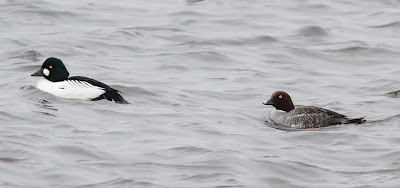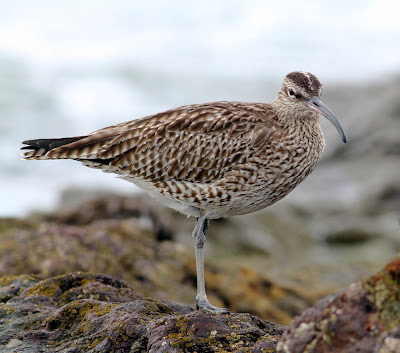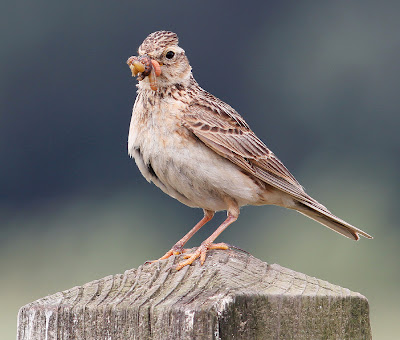Here in this little corner of Lancashire we escaped the damage inflicted to many parts of the UK by the wind, rain and tidal surges of recent weeks. The abnormally high tides left debris in unaccustomed places, a number of trees lying across the ground and flooded fields that appeared as if by magic. Apart from more damaged fencing, home suffered no ill effects.
Today I set off for Conder and called in at Pilling, the red sky in the morning displaying a warning which proved remarkably accurate when by 1pm the rain had arrived again, but thankfully not too much wind.
Pilling - Red Sky In The Morning
I was too late for the Little Egret roost as most seem to have departed, a single bird just setting off for the day and 2 or 3 more on the saltmarsh. Further out on the marsh I counted 112 Whooper Swans at roost with I suspect more hidden from sight in the tidal channel, and maybe some Mute Swans too.
Whooper Swans
I stopped at Cockerham where I counted 140+ Lapwings on the flood, 3 Little Egrets and 2 patrolling Buzzards. It was too early in the morning for these Buzzards to fly as one was fence hopping and the other strutting around a field in search of earthworms and such like, stopping every now and then to eat before then flying a few yards to another likely spot. As birdwatchers know, Buzzards aren’t the villains that many sportsmen would like to make out.
Buzzard - Mark Medcalf (CuriousUploaded by snowmanradio) [CC-BY-2.0], via Wikimedia Commons
Some two hours later and on the way back from Conder I stopped here again to find phenomenal numbers of birds on the several flooded fields - 3500 Lapwing, 450 Curlew, 450 Golden Plover and 1500 Starlings but no Buzzards.
At Conder Pool the aftermath of recent weather was most obvious at the pool. It’s a stretch of water adjacent to a tidal creek where overflow from high tides might occasionally cover the road to sometimes caress the steps of the screen hide. Today the old screen looked forlorn, battered almost beyond recognition by wind and high water, the path gouged away by surges of fast-flowing tides. The water level is now so high that birds normally out of sight on the flash of a pool were now elevated by the high water level and clearly visible to anyone walking the deeply puddled and debris strewn road.
Sadly it will take more than a month or two for the once-pool now-lake to return to muddy edged wader heaven, but the larger expanse of open water has pulled in the wildfowl.
Conder "Pool"
Local Kingfishers like to sit on the stone wall of the outflow and study the water some 18 inches below, but the water level is now virtually level with the wall. I hadn’t seen a Kingfisher for a while but this morning I saw one fly from the edge of the creek and head off towards the road bridge. The picture is from the same spot as above, the parapet at the right of the shot, but the photo taken on a sunnier, pre-flood day.
Kingfisher
Wildfowl and wader counts, creek and pool: 290 Teal, 70 Wigeon, 5 Little Grebe, 4 Goldeneye, 2 Tufted Duck, 1 Grey Heron, 1 Little Egret, 1 Spotted Redshank, 30 Redshank, 8 Curlew, 18 Lapwing
At Glasson Dock the recent storms had sunk someone’s home, the water still invading the slowly disappearing cabin.
Glasson Dock
A fellow blogger in Ontario recently posted pictures of Goldeneyes, a wary species usually difficult to approach here in the UK, but David's pictures made me try a bit harder today with the gang of 13 Goldeneye on the yacht basin.
They motored in and out of the centre of the basin according to the passage of humans on the car park or along the tow path; eventually I was able to get a few passable pictures, albeit by using ISO800 in the grey morning light as the birds bobbed up and down on the choppy water.
Note the yellow/ochre patch between the nail and nostril of the female’s bill, a feature which I must admit I hadn’t properly appreciated when dealing with Goldeneyes at normal distances. Hope your weather improves too David, but please don’t send it this way.
Goldeneye
Goldeneye
Goldeneye
Other wildfowl here - 1 Pochard, 35 Tufted Duck, 40 Coot, 1 Cormorant.


.jpg)











































































